-
 Bitcoin
Bitcoin $117500
2.15% -
 Ethereum
Ethereum $3911
6.19% -
 XRP
XRP $3.316
10.79% -
 Tether USDt
Tether USDt $1.000
0.01% -
 BNB
BNB $787.2
2.24% -
 Solana
Solana $175.2
4.15% -
 USDC
USDC $0.9999
0.00% -
 Dogecoin
Dogecoin $0.2225
8.40% -
 TRON
TRON $0.3383
0.28% -
 Cardano
Cardano $0.7868
6.02% -
 Stellar
Stellar $0.4382
9.34% -
 Hyperliquid
Hyperliquid $40.92
7.56% -
 Sui
Sui $3.764
7.63% -
 Chainlink
Chainlink $18.48
10.66% -
 Bitcoin Cash
Bitcoin Cash $582.1
1.88% -
 Hedera
Hedera $0.2601
6.30% -
 Avalanche
Avalanche $23.33
4.94% -
 Ethena USDe
Ethena USDe $1.001
0.02% -
 Litecoin
Litecoin $122.3
2.04% -
 UNUS SED LEO
UNUS SED LEO $8.969
-0.27% -
 Toncoin
Toncoin $3.339
0.86% -
 Shiba Inu
Shiba Inu $0.00001287
4.30% -
 Uniswap
Uniswap $10.43
7.38% -
 Polkadot
Polkadot $3.861
5.08% -
 Dai
Dai $1.000
0.02% -
 Bitget Token
Bitget Token $4.513
3.41% -
 Monero
Monero $267.7
-6.18% -
 Cronos
Cronos $0.1499
4.14% -
 Pepe
Pepe $0.00001110
5.15% -
 Aave
Aave $284.9
8.28%
Are there seasonal fluctuations in the NFT market?
The NFT market experiences seasonal fluctuations influenced by holidays, cultural events, and crypto trends, which savvy investors can leverage for better timing and portfolio diversification.
Apr 06, 2025 at 05:43 am
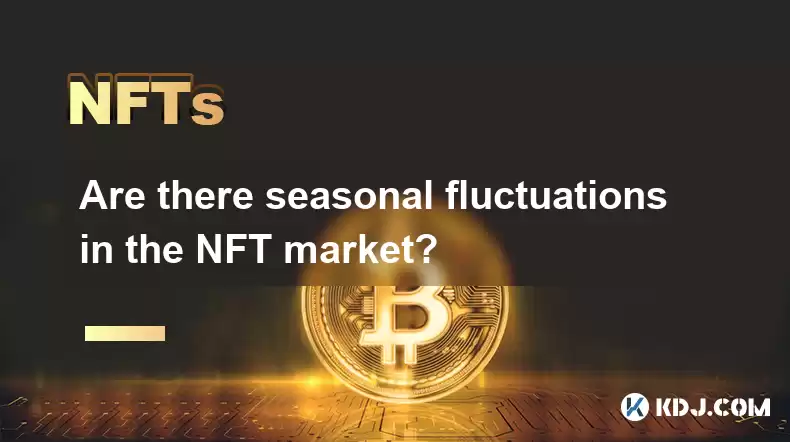
The NFT market, like many other financial markets, experiences seasonal fluctuations that can impact the buying, selling, and overall interest in non-fungible tokens. Understanding these patterns can help investors and enthusiasts make more informed decisions. Seasonal trends in the NFT market can be influenced by various factors, including holidays, cultural events, and shifts in the broader cryptocurrency market. This article will explore the evidence of seasonal fluctuations in the NFT market, the factors driving these trends, and how investors can potentially benefit from this knowledge.
Evidence of Seasonal Fluctuations in the NFT Market
There is growing evidence suggesting that the NFT market experiences seasonal fluctuations. For instance, data from various NFT marketplaces like OpenSea and Rarible show spikes in trading volumes and sales during certain times of the year. One of the most notable periods is during the end-of-year holidays, where there is a surge in interest and spending on digital assets. Additionally, significant cultural events like Art Basel and the Super Bowl have been observed to drive increased activity in the NFT space. These patterns suggest that seasonal trends do indeed play a role in the NFT market.
Factors Driving Seasonal Trends in the NFT Market
Several factors contribute to the seasonal fluctuations observed in the NFT market.
Holidays and Festive Seasons: During holidays like Christmas and New Year, people often have more disposable income and time to explore new investments, including NFTs. This leads to increased trading volumes and higher prices for popular NFTs.
Cultural and Sporting Events: Events like Art Basel and the Super Bowl attract significant attention and often feature NFT collaborations or special releases. These events can create a buzz around specific NFTs, driving up demand and prices.
Crypto Market Trends: The broader cryptocurrency market also influences NFT market trends. Bullish periods in the crypto market can lead to increased interest and investment in NFTs, while bearish periods can result in decreased activity.
Seasonal Releases and Promotions: NFT projects often time their releases and promotional events to coincide with peak interest periods, further contributing to seasonal fluctuations.
How Investors Can Benefit from Seasonal Fluctuations
Understanding seasonal trends in the NFT market can provide investors with several advantages.
Timing Purchases and Sales: By identifying peak periods, investors can time their purchases and sales to maximize returns. Buying NFTs during quieter periods and selling during peak times can lead to higher profits.
Diversification: Investors can diversify their portfolios by investing in NFTs during different seasons. This strategy can help mitigate risks associated with market volatility.
Staying Informed: Keeping an eye on upcoming events and releases can help investors stay ahead of market trends. Subscribing to newsletters and following NFT influencers can provide valuable insights into upcoming opportunities.
Long-term Planning: Understanding seasonal trends can help investors plan their long-term investment strategies, taking advantage of predictable fluctuations to build a robust NFT portfolio.
Case Studies of Seasonal Fluctuations in the NFT Market
To better understand how seasonal fluctuations impact the NFT market, let's look at a few case studies.
End-of-Year Holiday Surge: In December 2021, OpenSea reported a significant increase in trading volume, with sales reaching over $3 billion. This surge was attributed to the holiday season, where people had more time and money to invest in digital assets.
Art Basel Impact: During Art Basel in December 2021, several NFT projects collaborated with artists featured at the event, leading to a spike in interest and sales. For instance, the NFT project Art Blocks saw a 50% increase in sales during the event.
Super Bowl NFT Releases: In February 2022, the NFL released special edition NFTs during the Super Bowl, leading to a temporary increase in NFT market activity. These NFTs sold out quickly, highlighting the impact of major sporting events on the market.
Strategies for Navigating Seasonal Fluctuations
Navigating seasonal fluctuations in the NFT market requires a strategic approach. Here are some strategies that investors can use:
Research and Analysis: Conduct thorough research on past seasonal trends and upcoming events that could impact the NFT market. Use data analytics tools to identify patterns and make informed decisions.
Flexibility: Be prepared to adjust your investment strategy based on current market conditions. Seasonal trends can shift, and staying flexible can help you capitalize on new opportunities.
Risk Management: Implement risk management strategies to protect your investments. This can include setting stop-loss orders and diversifying your portfolio to mitigate potential losses during downturns.
Community Engagement: Engage with the NFT community to stay informed about upcoming releases and events. Participating in forums and social media groups can provide valuable insights and networking opportunities.
The Role of Technology in Tracking Seasonal Trends
Technology plays a crucial role in tracking and analyzing seasonal trends in the NFT market. Various tools and platforms can help investors stay ahead of the curve.
NFT Marketplaces: Platforms like OpenSea and Rarible provide real-time data on trading volumes, sales, and popular NFTs. Investors can use this data to identify seasonal trends and make informed decisions.
Analytics Tools: Tools like Nansen and Dune Analytics offer advanced data analytics capabilities, allowing investors to track market trends and identify patterns over time. These tools can help investors predict seasonal fluctuations and plan their strategies accordingly.
Blockchain Explorers: Blockchain explorers like Etherscan can provide insights into the underlying blockchain data, helping investors understand the flow of funds and transactions related to NFTs. This information can be used to track seasonal trends and identify potential opportunities.
AI and Machine Learning: AI and machine learning algorithms can analyze vast amounts of data to identify seasonal patterns and predict future trends. These technologies can provide investors with a competitive edge in the NFT market.
The Impact of Seasonal Fluctuations on Different Types of NFTs
Seasonal fluctuations can impact different types of NFTs in varying ways. Understanding these differences can help investors tailor their strategies to specific types of NFTs.
Art NFTs: Art NFTs often see increased interest during cultural events like Art Basel and the Venice Biennale. These events can drive up demand and prices for art-related NFTs, making them particularly susceptible to seasonal trends.
Gaming NFTs: Gaming NFTs may experience seasonal fluctuations tied to the release of new games or updates. For example, the release of a new game with integrated NFTs can lead to a surge in interest and sales.
Collectible NFTs: Collectible NFTs, such as sports memorabilia or trading cards, can see increased demand during major sporting events like the Super Bowl or the World Cup. These events can drive up interest and prices for related NFTs.
Utility NFTs: Utility NFTs, which provide access to certain services or benefits, may see seasonal fluctuations tied to the demand for those services. For example, NFTs that offer access to exclusive events may see increased interest during peak event seasons.
Future Trends and Predictions
As the NFT market continues to evolve, understanding future trends and predictions related to seasonal fluctuations can provide valuable insights for investors.
Increased Institutional Interest: As more institutional investors enter the NFT market, seasonal fluctuations may become more pronounced. Institutional investors often have more capital to invest during peak periods, which can drive up demand and prices.
Integration with Traditional Markets: The integration of NFTs with traditional financial markets could lead to more predictable seasonal trends. For example, if NFTs become part of mainstream investment portfolios, they may follow similar seasonal patterns as stocks and bonds.
Regulatory Changes: Changes in regulations related to NFTs could impact seasonal fluctuations. Stricter regulations may lead to more cautious investment during certain periods, while more favorable regulations could drive increased activity.
Technological Advancements: Advances in blockchain technology and data analytics could improve the ability to track and predict seasonal trends. This could lead to more sophisticated investment strategies and better outcomes for investors.
Common Questions Related to Seasonal Fluctuations in the NFT Market
Q: What are the most significant seasonal periods for the NFT market?
A: The most significant seasonal periods for the NFT market include the end-of-year holidays, major cultural events like Art Basel, and major sporting events like the Super Bowl. These periods often see increased trading volumes and higher prices for popular NFTs.
Q: How can I identify seasonal trends in the NFT market?
A: To identify seasonal trends in the NFT market, you can use data from NFT marketplaces like OpenSea and Rarible, as well as analytics tools like Nansen and Dune Analytics. Tracking trading volumes, sales, and popular NFTs during different times of the year can help you identify patterns.
Q: What strategies can I use to take advantage of seasonal fluctuations in the NFT market?
A: Strategies for taking advantage of seasonal fluctuations include timing your purchases and sales, diversifying your portfolio, staying informed about upcoming events and releases, and implementing risk management strategies. Engaging with the NFT community can also provide valuable insights and opportunities.
Q: Do different types of NFTs experience different seasonal trends?
A: Yes, different types of NFTs can experience different seasonal trends. For example, art NFTs may see increased interest during cultural events, while gaming NFTs may see fluctuations tied to game releases. Understanding these differences can help you tailor your investment strategy to specific types of NFTs.
Q: How might future trends impact seasonal fluctuations in the NFT market?
A: Future trends such as increased institutional interest, integration with traditional markets, regulatory changes, and technological advancements could impact seasonal fluctuations in the NFT market. These factors could lead to more pronounced seasonal trends and more sophisticated investment strategies.
Disclaimer:info@kdj.com
The information provided is not trading advice. kdj.com does not assume any responsibility for any investments made based on the information provided in this article. Cryptocurrencies are highly volatile and it is highly recommended that you invest with caution after thorough research!
If you believe that the content used on this website infringes your copyright, please contact us immediately (info@kdj.com) and we will delete it promptly.
- Bitcoin, Meme ICOs, and FOMO: Catching the Next Crypto Wave
- 2025-08-08 18:30:34
- OM, Investment, and Growth: Decoding the Latest Trends in Digital Assets
- 2025-08-08 18:30:34
- SNEK, Cardano, and the Contributor's Conundrum: A Meme Coin's Fight for Recognition
- 2025-08-08 16:30:12
- Toshi Crypto's Wild Ride: Rally, Demand Slump, and What's Next
- 2025-08-08 16:30:12
- Ethereum, Staking Yields, and DeFi Exposure: A New Era for Investors?
- 2025-08-08 15:10:12
- Unilabs Pumps MIA, Binance Coin Bouncing Back, and Ethereum's Bearish Blues
- 2025-08-08 15:10:12
Related knowledge
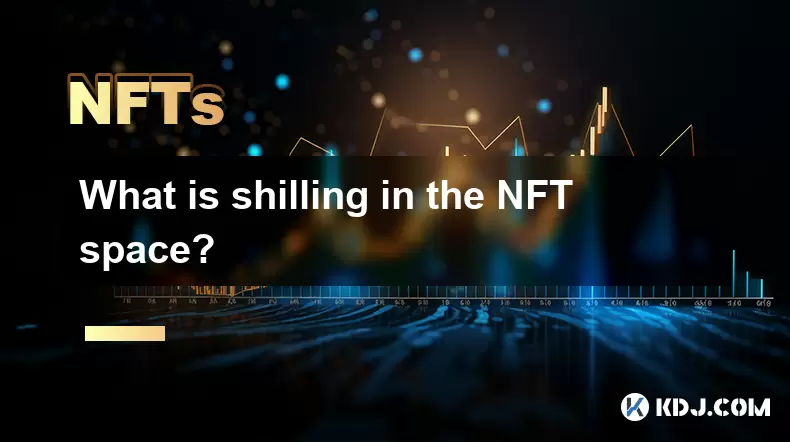
What is shilling in the NFT space?
Aug 08,2025 at 02:14am
Understanding the Concept of Shilling in the NFT EcosystemIn the NFT space, the term shilling refers to the act of aggressively promoting a specific d...
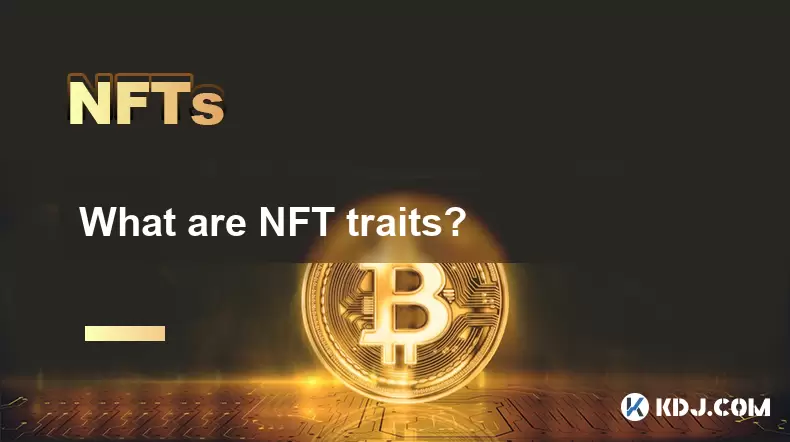
What are NFT traits?
Aug 07,2025 at 10:35pm
Understanding the Concept of NFT TraitsNFT traits define the unique characteristics of a non-fungible token, particularly within collections such as p...
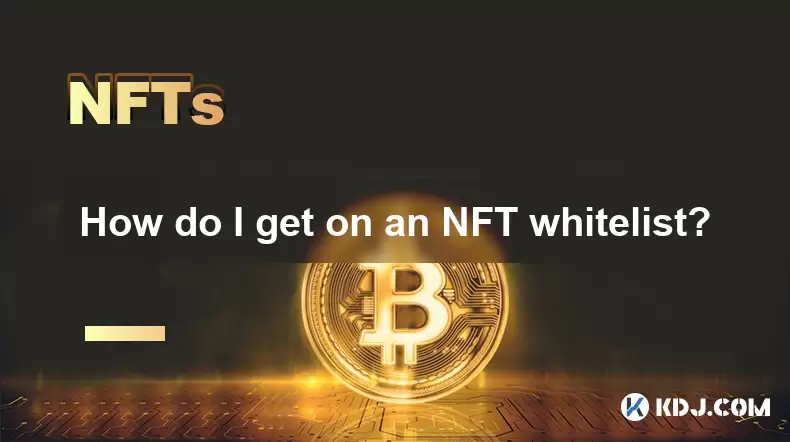
How do I get on an NFT whitelist?
Aug 08,2025 at 09:15am
Understanding the Concept of an NFT WhitelistAn NFT whitelist is a curated list of wallet addresses granted special privileges during an NFT project’s...
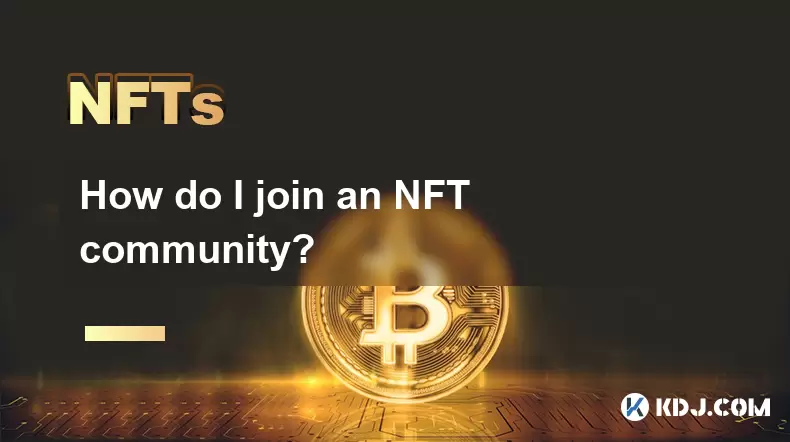
How do I join an NFT community?
Aug 07,2025 at 10:21pm
Understanding the Purpose of NFT CommunitiesNFT communities are digital ecosystems built around specific non-fungible token projects, artists, or broa...
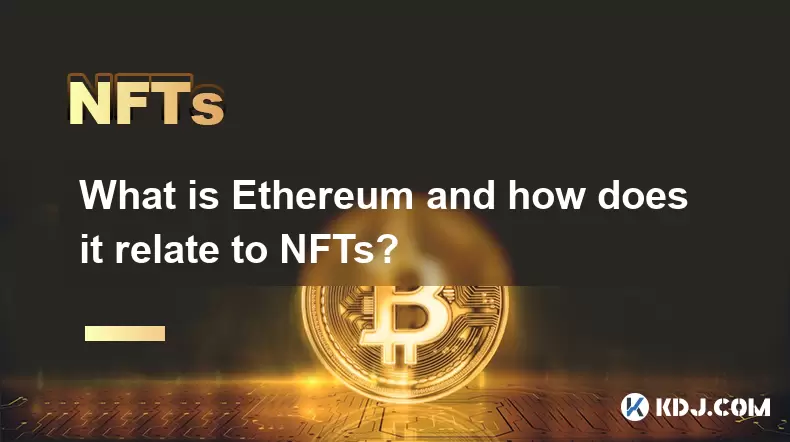
What is Ethereum and how does it relate to NFTs?
Aug 08,2025 at 12:29am
Understanding Ethereum: A Decentralized Platform for Smart ContractsEthereum is a decentralized, open-source blockchain platform that enables develope...
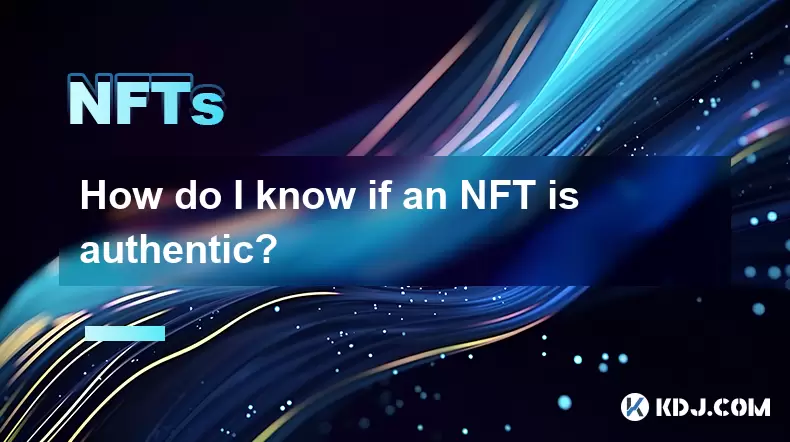
How do I know if an NFT is authentic?
Aug 07,2025 at 10:14pm
Understanding NFT Authenticity and Blockchain VerificationWhen assessing whether an NFT is authentic, the foundation lies in understanding how blockch...

What is shilling in the NFT space?
Aug 08,2025 at 02:14am
Understanding the Concept of Shilling in the NFT EcosystemIn the NFT space, the term shilling refers to the act of aggressively promoting a specific d...

What are NFT traits?
Aug 07,2025 at 10:35pm
Understanding the Concept of NFT TraitsNFT traits define the unique characteristics of a non-fungible token, particularly within collections such as p...

How do I get on an NFT whitelist?
Aug 08,2025 at 09:15am
Understanding the Concept of an NFT WhitelistAn NFT whitelist is a curated list of wallet addresses granted special privileges during an NFT project’s...

How do I join an NFT community?
Aug 07,2025 at 10:21pm
Understanding the Purpose of NFT CommunitiesNFT communities are digital ecosystems built around specific non-fungible token projects, artists, or broa...

What is Ethereum and how does it relate to NFTs?
Aug 08,2025 at 12:29am
Understanding Ethereum: A Decentralized Platform for Smart ContractsEthereum is a decentralized, open-source blockchain platform that enables develope...

How do I know if an NFT is authentic?
Aug 07,2025 at 10:14pm
Understanding NFT Authenticity and Blockchain VerificationWhen assessing whether an NFT is authentic, the foundation lies in understanding how blockch...
See all articles

























































































